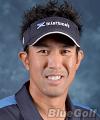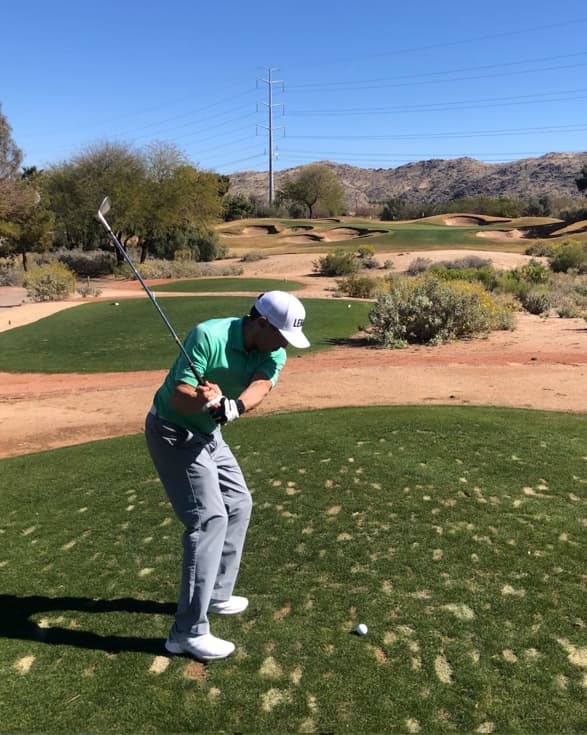If you read this far and understand the backswing and the top of the swing, let’s take a breath because the golf downswing is much easier and more of a reaction part of the golf swing. If you perform a proper backswing and top of the swing, you should hit the golf ball using the ‘right parts’ of the body.
We still want to understand what happens when you come down and even how to start it – but it will be a move that should have already been set up by a proper backswing and transition.
Use Your Body More Than Your Hands
In other words, don’t tighten your grip! If your hands are loose on the golf grip, you will train your body to lead your downswing. Everyone has different tension but we do not want to “pull down” the club on the downswing. If you do, you most likely will hold your body back at one point and prevent potential power and speed.
Use the Ground
You may hear that good ball strikers use the ground to create more power and clubhead speed. If you completed your backswing properly and felt your trigger, you should be in a position to feel your downswing led by your lower body starting with your leading foot. This means you will use the ground by pushing off that lead foot to start your downswing. Your legs and hips will follow this powerful move.
Feel Your Hips Rotate Forward
The way you want your hips to move is to rotate them so it feels like you are going behind your left side of your back. If you have side pockets on your pants, you want to feel that I am pulling the trail side pocket around your body as it feels like it’s rotating more parallel with the ground. You will now feel like your body is turning way over to your forward side/back.
You don’t want to feel that you are sliding/swaying the hips forward or staying back while the golf club comes down until impact. These will usually create an unintended sweeping attack on the ball which means less divots made and added loft on the club at impact. This can also cause you to lift your head up early which has its own consequences.
Shoulders Can Fire Through Too
You want to feel your shoulders turn along with your hip rotation. I’ve seen students focused on the hips leading the way while the shoulders get left behind thus creating the lead side of your body higher than it should be at impact. We want to make sure all of your body components travel with the momentum forward, not staying back. Your shoulders can assist in turning through impact with maximum speed and power.
Shallow Club Plane
If you had your lower body lead your downswing and your pivoted your body through impact, you will shallow out your club shaft which means you will be coming through impact more square and longer down the line.
Clubface Should Still Be Open
If you set your clubface square at setup and opened your clubface when you made your backswing, your clubface will close during the downswing but will still be “slightly” open / almost square all the way through impact. Post impact is when the club will finally be in a closed position from the body turn/finish.
Clear Your Hips Right Before Impact
This means that most of your weight has transferred over to your forward side from the hip rotation. When all of your weight transfers into your forward foot, you will then make contact with the golf ball just afterwards. You’ll know when you clear your hips properly when your forward heel steps into the ground.
Almost everyone has done it before but just in a different way. If you were to throw a ball, you would step into your forward leg/foot then release the ball right afterwards. Many sports have similar movements like hitting a tennis ball, passing a basketball, swing a baseball bat, throwing a football. If you want to send an object with the greatest force, you must use your body weight and rotation before sending/releasing it. The flex in the golf shaft only helps increase that speed of the golf clubhead when it makes contact with the golf ball.


